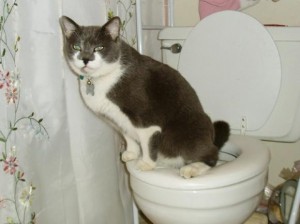Reasons You Should Avoid Flush Cat Poop Down Your Toilet - Important Facts
Reasons You Should Avoid Flush Cat Poop Down Your Toilet - Important Facts
Blog Article
Just how do you really feel when it comes to How to Dispose of Cat Poop and Litter Without Plastic Bags?

Intro
As pet cat proprietors, it's vital to bear in mind just how we throw away our feline close friends' waste. While it might seem practical to flush pet cat poop down the commode, this method can have harmful repercussions for both the environment and human health.
Alternatives to Flushing
The good news is, there are much safer and much more responsible means to get rid of cat poop. Take into consideration the following choices:
1. Scoop and Dispose in Trash
One of the most common method of taking care of pet cat poop is to scoop it right into a biodegradable bag and throw it in the trash. Make sure to use a committed trash scoop and throw away the waste quickly.
2. Usage Biodegradable Litter
Opt for naturally degradable pet cat litter made from materials such as corn or wheat. These trashes are environmentally friendly and can be safely taken care of in the garbage.
3. Bury in the Yard
If you have a yard, think about burying feline waste in a marked location far from veggie yards and water resources. Make certain to dig deep adequate to stop contamination of groundwater.
4. Mount a Pet Waste Disposal System
Buy a pet dog garbage disposal system especially made for feline waste. These systems utilize enzymes to break down the waste, decreasing smell and environmental impact.
Health Risks
In addition to ecological problems, purging cat waste can also posture health and wellness risks to people. Cat feces might include Toxoplasma gondii, a parasite that can create toxoplasmosis-- a potentially extreme health problem, particularly for expectant women and people with weakened body immune systems.
Environmental Impact
Flushing feline poop introduces dangerous pathogens and bloodsuckers into the water system, posing a considerable threat to aquatic ecological communities. These contaminants can negatively impact marine life and concession water top quality.
Conclusion
Accountable family pet possession extends beyond offering food and sanctuary-- it additionally entails proper waste management. By avoiding purging pet cat poop down the commode and opting for alternate disposal methods, we can minimize our ecological footprint and secure human health and wellness.
Why You Should NEVER Flush Cat Poop (and/or Litter) Down Your Toilet
The Problem with Litter
The main function of litter is to solidify and adhere to your cat’s waste. While this makes litter excellent for collecting cat poop and urine, it’s also the exact property that makes it a nightmare when flushed down the toilet.
Cat litter can and will clog pipes. There is non-clumping litter, but it’s still quite heavy and can build up in pipes. This is true even of supposed “flushable litter.”
The problems only compound when the litter is already clumped into cat waste. Toilet paper is among the more flushable things, and even too much of that will clog a toilet.
The Problem with Cat Poop
Sewers and septic systems are designed with human waste in mind. The microbes that help break down human waste don’t work on cat waste. Additionally, cat poop plays host to the parasite Toxoplasma gondii.
When flushed, this parasite can enter the environment in places it was never meant to, posing a risk to pregnant women, their unborn children, and other people with compromised immune systems. While it might not seem possible, flushing cat poop can indeed introduce this parasite to the public water supply.
These reasons are why, even if you’ve trained your cat to go on the toilet and flush, which is possible, it’s still not a good idea. Also, pregnant women and the immunocompromised shouldn’t change litter, either.
How to Handle Litter
The best way to handle litter is to simply put it in a plastic bag and place it in the trash. Avoiding environmental risks and possible plumbing damage is worth the extra effort.
You can also invest in devices that seal away your cat’s waste in a separate compartment, so you don’t have to change the litter nearly as often. They’re also safer for pet owners because they limit the possibility of Toxoplasma gondii exposure.
Disposing of litter the old-fashioned way will ensure you won’t have to worry about any issues that flushing the waste can potentially cause.
Take Care of Clogged Pipes with Stephens Plumbing, Heating & Air Conditioning
The reasons you should never flush cat poop down your toilet are numerous, but sometimes the inevitable happens despite your best efforts.
Stephens Plumbing, Heating & Air Conditioning is ready to help if you’re experiencing litter-blocked plumbing. Whether you need us in an emergency or want to schedule regular maintenance, we’re here for you.
https://www.stephensplumbing.net/bathroom-plumbing/never-flush-cat-poop-down-your-toilet/

We had been shown that editorial on How to Dispose of Cat Poop and Litter Without Plastic Bags from an associate on a different site. If you please set aside a second to promote this page if you enjoyed it. Thank-you for taking the time to read it.
Click Here Report this page